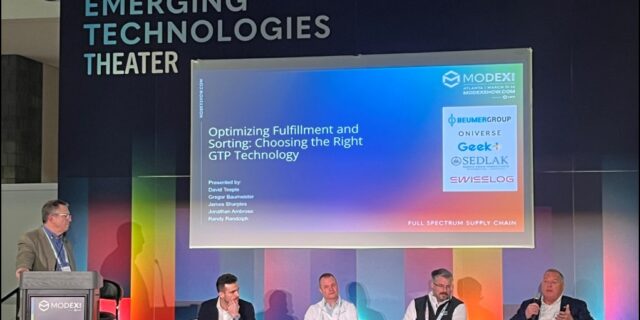Q&A: Labor Management…Works!
June 26, 2017 By: Louis J. Cerny | Topics: IT Solutions, Productivity & LaborQ. What percentage of companies employ some form of labor management system (LMS)?
A. About 30% of our clients have true labor management systems in their distribution centers (DCs). We’re seeing a trend in clients realizing the benefits they can gain from such systems. Three of our largest clients have either completed an implementation or are currently implementing an LMS as part of their distribution center effort. LMS is an integral part of achieving the maximum benefit of distribution systems.
Q. What are some of the benefits of LMS?
A. Every company is seeking the maximum return on their investment, and labor is probably one of the most important and expensive assets in an organization. In implementing an LMS, companies should be looking to create opportunities for their associates to provide the best customer service and to increase their personal income. An LMS really allows the “stars” to be rewarded and allows everyone in an organization to improve.
Q. What types of labor in a DC are managed by an LMS?
A. Typically, the direct labor functions – activities that actually touch and move product through a fulfillment center – are managed by an LMS. Those are functions appropriate for individual incentive –associates can be measured and rewarded for their work on an individual basis. A few functions in a fulfillment center are really a group activity, and there is no easy way to delineate individual contribution. So, in those instances, there will be a group incentive and the entire group shares in the benefits of that work. But the vast majority of functions in the distribution center are individually-based.
Q. How does LMS work?
A. Companies set benchmarks for productivity for each function in the fulfillment center, then measure actual performance against those marks. That begins with the development of a standard operating procedure (SOP) for each activity, so everyone knows the expectation for how that work is to be performed in the most efficient, safe and ergonomic manner. Once SOPs are written, the organization has a responsibility to ensure its people understand the expectations of their jobs and also are properly trained to meet them. Incentives are then based on productivity levels. Measurements are very meticulous – down to the lengths of movements between picks, as an example – and individualized for each job function.
Q. Do employees push back against the perception that this is just “Big Brother” watching every single moment of their activities during the work day?
A. Yes, but the reality is, no matter what your job, someone is watching or keeping track of you in one fashion or another. The difference with LMS is that it is measurable and, therefore, objective. Change management is a critical factor in the success of rolling out an LMS program – letting the associates know what is coming, sharing expectations, and making sure they are fully engaged in the process. This is especially true if it’s an existing operation where people are used to doing their job the way they do it. Everyone has a fear of the unknown, but a labor management program is not meant to create a “Big Brother.” It really is intended to ensure that people have the tools they need to properly perform their job and be rewarded accordingly.
Q. When is the optimal time to implement an LMS?
A. In an existing operation, it can be done at any point in time because people are used to performing the functions and, hopefully, there are already SOPs in place. In a new operation, we recommend being fully operational for 3 to 6 months to make sure the systems are operating properly and that people understand their job functions. However, if labor management will be part of a new operation, it is important to let the associates know at the onset of their onboarding that this will be part of their performance measurement.
Q. What is the expected implementation time for an LMS?
A. Implementation takes roughly 2 weeks per labor standard, and the average distribution center has somewhere between 12 and 20 unique functions that will be measured by the LMS. Typically, a team is employed for this effort to monitor the SOPs, set standards, audit the standards, and roll out – thus reducing the average implementation time to 12 to 18 weeks.
Q. What is the typical ROI on an LMS?
A. The market will cite payback times of 6 or 8 months, and that is absolutely true. I often try to help clients understand that LMS is a win-win situation, but I had at least one client that resisted it for 6 years. When they finally implemented an LMS, they rolled it out to 3 facilities simultaneously and exceeded the projected 10% to 12% savings in labor, achieving up to 18% savings. It really is a 6- to 12-month payback in nearly all cases.
Q. Are there other advantages to LMS beyond cost savings?
A. Cost savings is certainly a business case driver, but at the end of the day, it’s really about retaining the best associates and ensuring that those associates are compensated and recognized for the work they are doing. It’s also about having standard procedures throughout the distribution center, starting with the SOPS and proper training, which results not only in improved performance, but also increased safety and accuracy in the work being done.
Sedlak has helped numerous clients with determining performance standards for distribution functions and selecting/implementing labor management systems. If you would like to learn more, fill out the contact form below.







